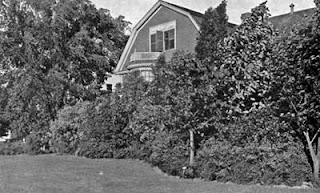 |
| Freshly harvested cilantro |
Plants having multiple uses is nothing new to science, turning corn into ethanol, the perennial foxglove into digitalis for heart conditions, and indoor plants cleaning the air of toxic gases, are a few examples. Now college students at Ivy Tech Community College, in Lafayette, Indiana, along with students from Universidad Politecnia de Francisco J. Madero in Hidalgo, Mexico have been studying one of my favorite herbs - cilantro - as a water filter for contaminated water.
Using a process called bioabsorption, the two colleges successfully collaborated on a research team to confirm using cilantro to capture heavy metals will remove lead and nickel from polluted water. Douglas Schauer, lead team member, says that the "ground-up cilantro can be inserted into a tube into which water is passed through. The cilantro allows the water to trickle out but absorbs metals, leaving cleaner drinking water. Dried cilantro can also be placed into tea bags that are placed in a pitcher of water for a few minutes to suck out the heavy metals."
Other possible bioabsorbant herbs include dandelions and parsley.
Read the entire article.





.JPG)
.JPG)

.JPG)
.JPG)























